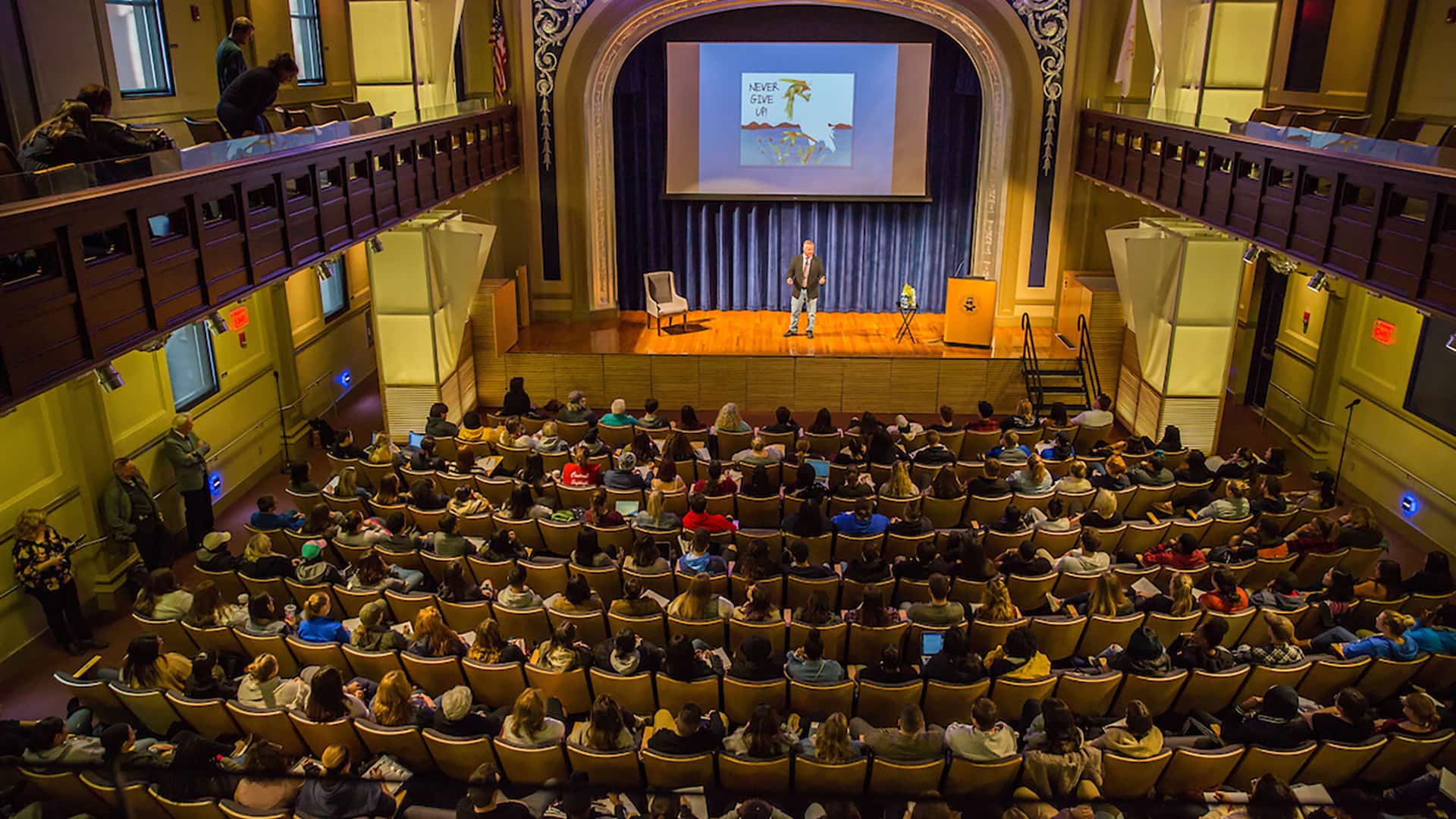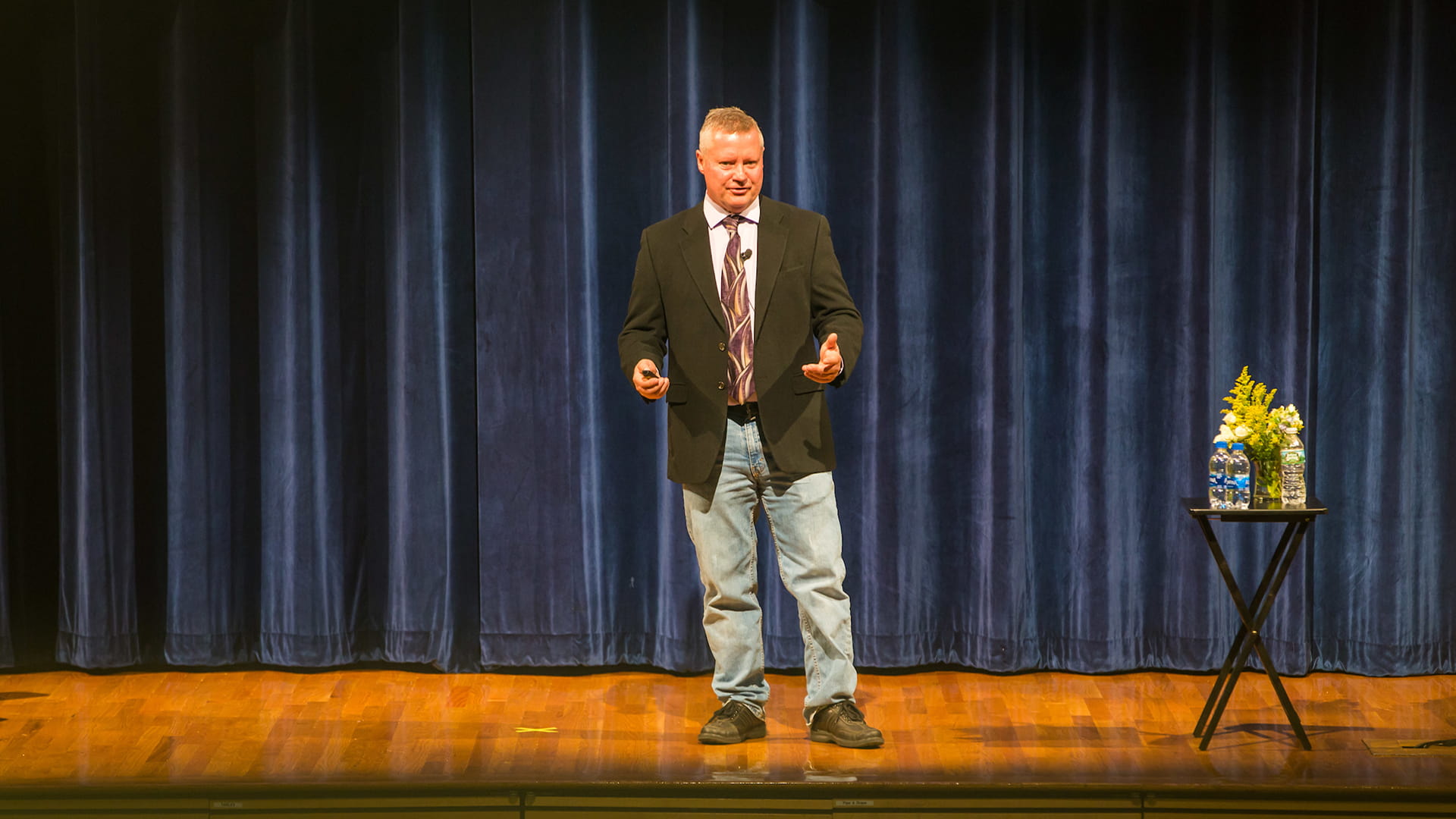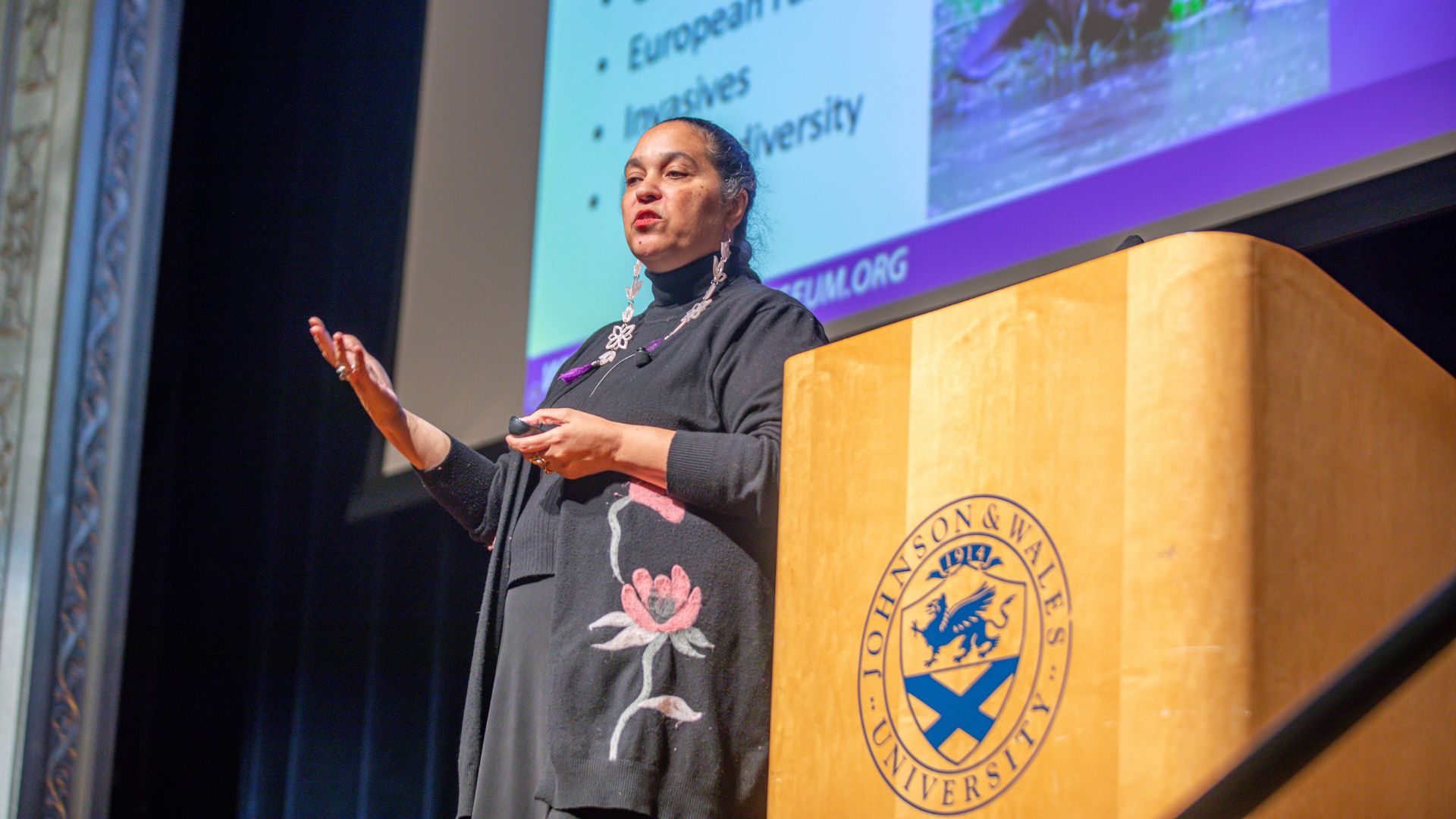Guilty Until Proven Innocent: The Jeffrey Scott Hornoff Story

For those who’ve never heard of him, Hornoff was once a police officer in Warwick, RI. He lived in Warwick with his wife and kids, and he enjoyed his work. But everything changed in 1989 when Victoria Cushman, a woman he had just ended a brief affair with, was murdered at her home in Warwick. Though Hornoff was guilty of being unfaithful to his wife, he was not guilty of murder.
“I’m sure you’ve all been accused of something you didn’t do, like cheating on a test or taking something that wasn’t yours,” Hornoff said to the crowd at the beginning of his talk. “Now just imagine being accused of murdering someone.”
"Just imagine being accused of murdering someone."
Because he admitted to knowing her, Hornoff was questioned by fellow Warwick detectives. At first, he denied any romantic ties to Cushman, but eventually admitted to the brief affair — which made him a potential suspect. A letter she had written to him was also found in her apartment. In the letter she asked if they could continue their relationship, and investigators theorized that perhaps Hornoff had killed Cushman to keep her from telling his wife about their affair. But, there was no physical evidence linking Hornoff to the crime, so the investigation continued for several years.
Hornoff believed he had cleared his name after the initial questioning and polygraph test he underwent in the days after the murder. He asked often about the investigation, but there had been no progress in the case. He was frustrated with how poorly the case had been handled. The crime scene was not processed properly, there was no DNA testing done on the evidence and some evidence that could have been potentially useful was not even tagged.

In his presentation, Hornoff shared some of the crime scene photos and pointed out some important items, including a pair of rubber gloves and a dirty band-aid found on the floor near Cushman’s body. The band-aid was never tagged as evidence, and the DNA tests on the gloves were inconclusive. He also showed a photo of Cushman’s Rolodex.
“None of the people in it were ever contacted,” Hornoff remarked. “The actual murderer was maybe fifth or sixth in that Rolodex.”
Others took notice of the mishandling of the case, too. The Attorney General eventually turned the case over to the Rhode Island State Police, who were quick to revisit Hornoff as a suspect. Investigations into the Warwick Police Department also took place to determine if they were trying to protect Hornoff. Hornoff was arrested in 1994, five years after Cushman’s murder. His trial took place in 1996, where he was convicted of first-degree murder despite the lack of physical evidence against him.

He spent six years, four months and 18 days in prison. During that time, he did research, wrote to legal organizations and pored over the details of the case. At one point, he heard that Craig Price, the infamous serial killer of Warwick who was housed in the same jail, was bragging that he was Cushman’s killer. This gave Hornoff hope, and he even tried to match Price’s footprints to the footprints found in Cushman’s home. He also sent out his own footprints for analysis to prove they didn’t match those found at the scene. However, he learned that foot print impressions were considered “junk science” and could not definitively prove his innocence.
"I wasn’t going to give them the satisfaction of telling people ‘I told you so.’"
He continued to argue motions for a new trial, but lost the appeals.
“They wanted me to admit to the murder,” Hornoff said in his presentation. “But I would never have admitted to it. I was innocent, and I wasn’t going to give them the satisfaction of telling people ‘I told you so.’”
Hornoff maintained his innocence, but remained in jail until November 2002, when the real murderer, Todd Barry, finally confessed to murdering Cushman. Barry said he finally confessed because he could no longer live with the guilt. The confession exonerated Hornoff and put Barry behind bars.
But, even though Hornoff had gained his freedom, in many ways he was still not free. Because of his incarceration, he lost his job, his home, his wife, and precious time with his growing children. After his release he was reinstated to the Warwick P.D., but the stigma surrounding him made it impossible to continue as a police officer. He was also extremely disappointed in how badly the system he once helped uphold had failed him.

HORNOFF WITH HIS DOG, TUUKKA.
The real point of Hornoff sharing his story is not to gain sympathy, but to improve the legal system and help other people like himself. He shared numerous statistics about exoneration that show how many stories like his are still happening all over the country. He also showed a clip from After Innocence, a documentary he participated in that follows the stories of several exonerees.
Most importantly, he wants to bring awareness to the psychological trauma that a wrongful conviction can cause. His time in prison has left him with Post Traumatic Stress Disorder (PTSD), a condition that many exonerees suffer from once they are introduced back into society. Exonerees are left to pick up the pieces of their life, try to find work and re-adjust to being in society — all of which can lead to anxiety, depression and a host of other mental issues that stem from how they were treated in prison.
To learn more about exonerations in the U.S., visit The National Registry of Exonerations.



